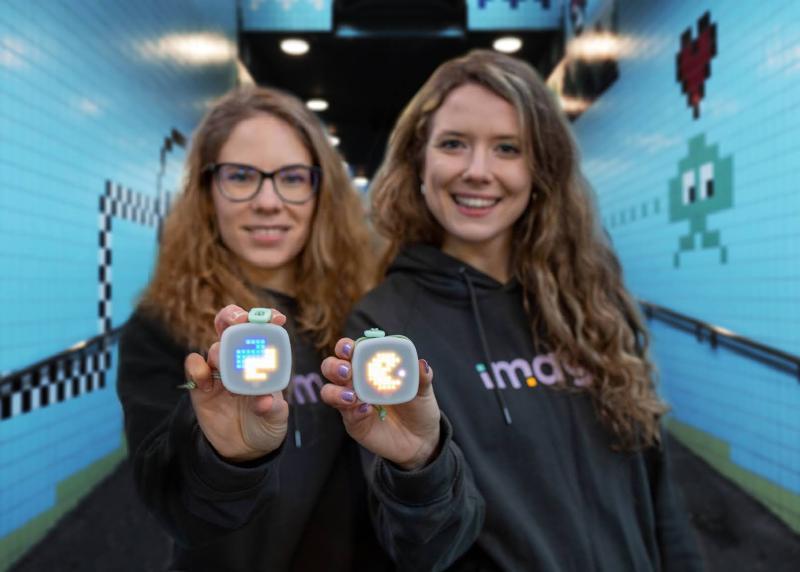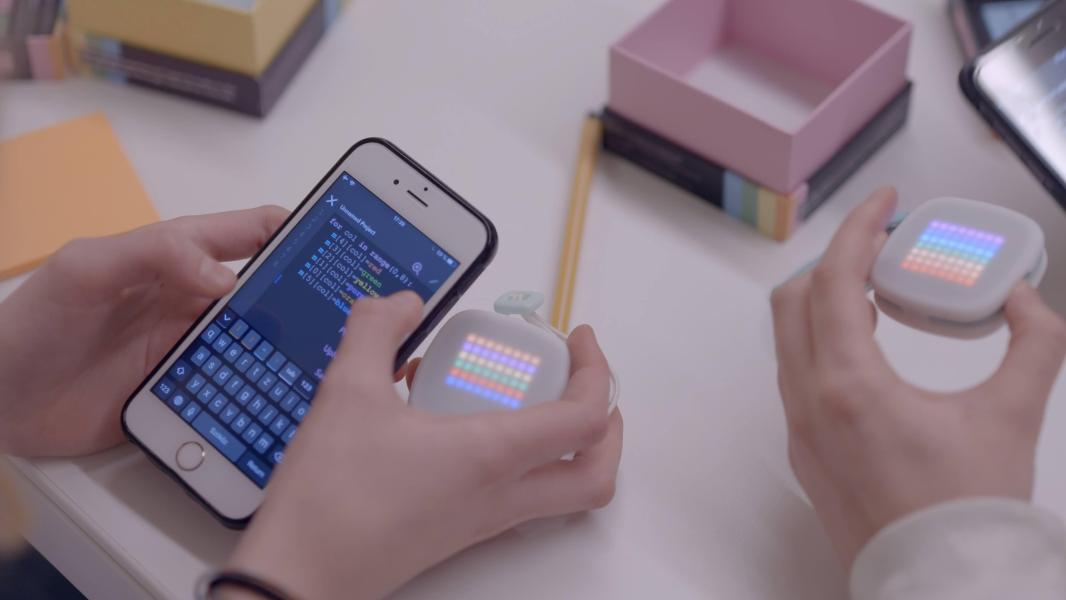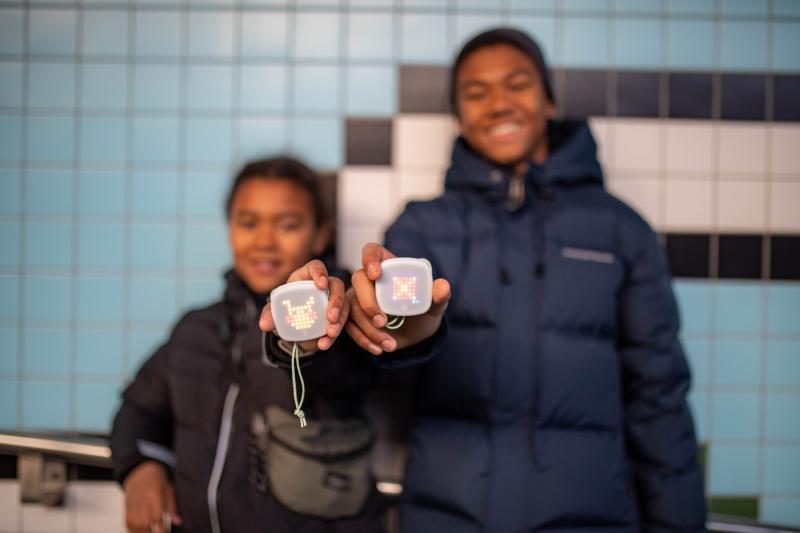Swedish company creates small LED device to help anyone learn how to code, but especially young girls
It’s well-known that the technology industry is a boys’ club. Dora Palfi, a technology entrepreneur in Sweden, experienced this gender disparity firsthand.
A native of Hungary with an early love for technology, Dora earned a bachelor’s degree in neuroscience and computer science at New York University Abu Dhabi. In her first job as a developer, she was commonly referred to as the “girl on the seventh floor.” Even today, she is often the only woman in the room in technology settings.
Inequality in technology starts when kids are in their early teens. By age 14, only about 12% of girls are interested in technology, Dora says. But up to age 12, interest in this field is about equal among boys and girls.
As an example of inequality, she refers to Apple’s health monitoring app, which originally did not allow women to track menstrual cycles. “If technology is the future, and if women are not equally involved in tech, then women don’t have an equal chance to shape the future,” Dora says.

From left to right, Beatrice Ionascu and Dora Palfi, founders of Imagi
At NYU, Dora met Beatrice Ionascu, an electrical engineering student, and they started a club for women in science, technology, engineering, and mathematics (STEM). While both were doing their master’s degrees in Sweden, Dora had the idea for a device that could help people learn how to code. She and Beatrice created imagi (originally imagiLabs) in 2018, and built the first prototype of their flagship product, called imagiCharm.
Cultivating an interest in technology
The product that they started selling in 2020 is a small accessory that can be attached to backpacks or bags. It has 64 tiny LED lights that can be turned into a wide range of designs, such as gingerbread cookies or a bouncing basketball, by using the programming language Python.

Charm uses Python as programming language
“People call this the programmable Tamagotchi, I think because it gives users this almost emotional attachment,” Dora says. “They have this little gadget, and they can sort of bring it to life.” Kids can share coding projects with the imagi community through the mobile app.
The company is focusing on a younger audience, ages eight and up, in hopes that the device will help kids maintain interest in technology through their teen years. The company says its research shows that in less than one hour of using imagiCharm, more than 10% of people have an increased interest in technology. ImagiCharms can be purchased online. The mobile app has more than 30,000 users in 99 countries.
‘The best place to go is to schools’
Imagi was a 2022 finalist in the European Investment Bank Institute’s Social Innovation Tournament, which helps entrepreneurs whose companies are trying to improve society or the environment. Dora says the finalist award gave her valuable access to a network of other founders.
Recently, imagi started focusing on schools. It supplied teachers in more than 30 countries, from the United Arab Emirates to the United States, with classroom packs of the devices. “If we truly want to make a change and reach every girl, then really the best place to go is to schools,” Dora says

Imagi started focusing on both school students and teachers
Nonprofit organisations like Black Girls Code and corporate partners such as Ericsson are helping to make imagiCharms and teacher training available in economically disadvantaged schools and in places like Mexico, Uganda, and South Africa.
“I think the biggest innovation is being able to create something teachers love and can use,” Dora says. “It doesn’t have to be super high-tech, but just teacher-friendly.” She and Beatrice have spent a lot of time running workshops and training teachers. They also want to produce videos and build an educator community, to ensure that any teacher can learn how to code the imagiCharm.
Wendie Turner, a teacher in Texas who has used the device, says it is OK if you have no coding experience. She told her students, “I don’t know everything there is to know about this, so we’re going to learn together.” Now Wendie is a media technology specialist at her school.
In the future, Dora hopes to make the imagiCharm capable of more complex programming and expand the age range to older kids. “If we are able to involve all children and make them potentially be interested in a tech career,” Dora says, “then we’ll be able to fill the gap that currently exists across Europe, but also globally.”
